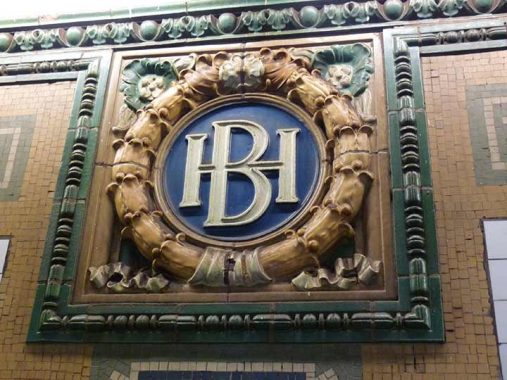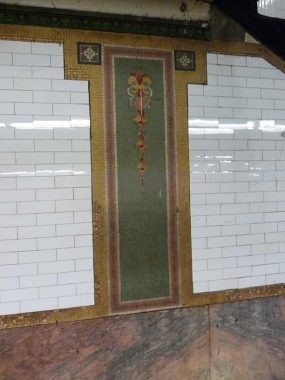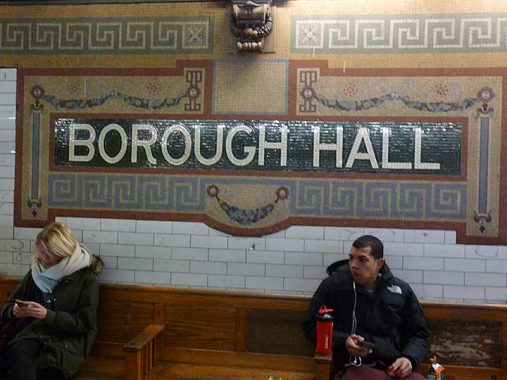
I like to say that Forgotten New York is not only a website that tries to shine a light on parts of New York City that don’t make the guidebooks, it’s also an infrastructure website in which I point out aspects of NYC public works that interest me. It’s by no means comprehensive: for a more complete look, including things like sewers or power plants, I’ll direct you to Kate Ascher’s indispensable 2007 book “The Works: Anatomy of a City.”
Today I will mention Brooklyn’s Borough Hall station, which is actually a complicated mashup of three different stations stacked atop or close to each other: The IRT Borough Hall station, serving #4 and 5 trains (1908); the second IRT Borough Hall station serving #2 and 3 trains (1919); and the BMT Court Street station serving R trains most of the time (1916). All three lines can transfer to each other.
It’s the 1908 Borough Hall station that interests me the most. It was once a terminal as the original 1904 subway was extended south from Manhattan’s City Hall to the wilds of Brooklyn four years later. 1908 was also the peak of the subways’ Beaux Arts period with ornate stations designed by architects George Lewis Heins (1860–1907) and Christopher Grant LaFarge (1862–1938) and the pair spared no expense at Boro Hall; architect Heins did not live long enough to see the IRT’s original Brooklyn expansion.
In the title card photo above, you see the mosaic station ID tablets featuring straightforward geen tiles with white lettering surrounded by buff and blue decorative mosaic work.

It’s in the bas relief wreaths and “BH” in white on a blue background that Heins & LaFarge went all out, with etrra cotta work created by the Hartford Faience Co., with mosaic versions at the end of the platform done by American Encaustic Tiling. These creations represent an early apotheosis of subway design. So much so that this station has been granted NYC Landmarks Preservation Commission protection. Some of the mosaic tablets have suffered from neglect over the years and await repair.

Mosaic “tapestries,” once found more frequently in the system, can still be seen at Boro Hall, 72nd Street (IRT) and 110th Street (IRT). Also note the marble or marble-look panels on the bottom.
As always, “comment…as you see fit.” I earn a small payment when you click on any ad on the site.
2/21/23
